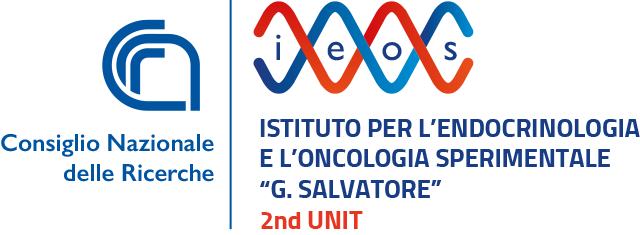HSPB1 and p62/SQSTM1 at the crossroads between protein aggregation, (macro)autophagy and unconventional secretion: #every little helps - Maurizio Renna - Department of Molecular Medicine and Medical Biotechnologies, University of Naples “Federico II”
Abstract:
Autophagy is a major cellular catabolic process responsible for the removal of longlived cytoplasmic proteins, protein complexes, as well as of entire intracellular organelles, which is fundamental for the homeostasis of eukaryotic cells. Indeed, alterations of the autophagic pathways have been implicated in a large set of human diseases. Over the years, one of the major goals of the research in the eld has been to identify novel pathways and molecular mechanisms regulating autophagy with the aim of providing potential alternative approaches for the treatment of many clinically relevant conditions, such as ageing, metabolic, neurodegenerative disorders, infectious diseases and cancer. In this context, conformational diseases, such as Alzheimer, Parkinson, Frontotemporal dementia and Huntington diseases, are part of a common class of neurological disorders characterized by the aggregation and progressive accumulation of proteins bearing aberrant conformations. For instance, Huntington disease (HD) has autosomal dominant inheritance and is caused by mutations leading to an abnormal expansion in the polyglutamine (polyQ) tract of the huntingtin (HTT) protein, leading to the formation of HTT inclusion bodies in neurons of a ected patients. Interestingly, recent experimental evidence is challenging the conventional view by which the disease pathogenesis is solely a consequence of the intracellular accumulation of mutant protein aggregates. These studies reveal that transcellular transfer of mutated huntingtin protein is able to seed oligomers involving even the wild type forms of the protein. To date, there is still no successful strategy to treat HD. Here we describe a novel functional role for the HSPB1-p62/SQSTM1 complex, which acts as a cargo loading platform, allowing the unconventional secretion of mutant HTT by extracellular vesicles (EVs). HSPB1 interacts preferentially with polyQ-expanded HTT compared with the wild type protein and a ects its aggregation in vitro and in vivo. Furthermore, HSPB1 levels correlate with the rate of mutant HTT secretion, which is controlled by the activity of the PI3K/AKT/mTOR signalling pathway. Finally, we show that these HTT-containing vesicular structures are biologically active and able to be internalised by recipient cells, therefore providing an additional mechanism to explain the prion-like spreading properties of mutant HTT. Potential implications of these ndings in the context of disease-associated mutant proteins turn-over will be discussed.
Host: Rosaria Di Martino (
Conference Room, CNR, P. Castellino Campus



